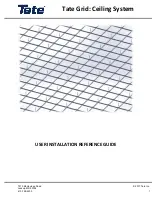
About this Manual
3
D24—Owner’s Manual
Tape recorder-like transport controls, and the Large vacuum fluorescent display, with
large, easy to read counter, make operation a breeze. Visual level monitoring is provided
by eight 16-segment track level meters. Selectable normal and fine scales make it easy
to set precise levels when recording reference tones. Also, projects can be titled for easy
identification.
The D24 can generate, or synchronize to either SMPTE/EBU or MTC (MIDI Time-
code) timecode. Timecode synchronization is to 1/10-frame accuracy, and an offset can
be set relative to an external timecode source.
Remote control is possible using MMC (MIDI Machine Control), or video editing
equipment that supports 9-pin protocols.
Other features include Absolute (ABS) and Relative (REL) counter modes, disk dupli-
cation with two D24s, and the ability to mount D24 MO disks on personal computers.
See “D24 Features” on page 4 for a concise rundown of D24 features.
About this Manual
This
Owner’s Manual
contains all the information you need in order to operate your
D24 Digital Multitrack Recorder. Use the table of contents to familiarize yourself with
the organization of this manual and locate topics, and use the index to locate specific
information. A glossary of D24-related jargon is provided on page 201.
The following format is used throughout this
Owner’s Manual
for display messages:
“FORMAT DISK—ARE YOU SURE”. The message before the dash appears on the 1st
line of the display, and the message after the dash appears on the 2nd line.
Installing the D24
The D24 can be used freestanding on a stable surface, somewhere that complies with
the important information at the beginning of this manual, or mounted in a rack.
When mounting the D24 in a rack, remove the D24’s feet and leave adequate ventilation
space around the D24 (at least 10 cm of free space behind). If the D24 is mounted in a
portable rack case, keep the rear of the case open when using the D24, so as not to
obstruct the flow of air from the cooling fan. Do not mount the D24 next to equipment
that produces a lot of heat, such as a power amplifier.













































